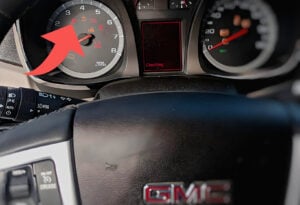Infiniti Dashboard Warning Lights Explained
Is there a warning light displayed on your Infinity dashboard? By reading the list below, learn the warning light’s meaning and possible solutions to fix the problem. This guide will explain the Infiniti Dashboard Warning Lights.
|
|
The system is malfunctioning if the ABS warning light illuminates while the engine is running. If it is not working properly, the brake system operates without using ABS. The ABS prevents the brakes from locking up during hard braking. Take caution not to brake too hard while the ABS is malfunctioning. Use an ABS scanner to diagnose problems with the system. Common ABS faults:
|
|
The service engine soon lamp means a fault has occurred in one of the various engine-related systems. It will only turn on when a vehicle recognizes a significant enough problem that needs serviced. A code will be stored within the vehicle’s computer to give more detail on the problem. Follow this guide to scan the vehicle’s computer for trouble codes to see why the check engine light has turned on. If the light is steady, driving for the time being is normally okay. Do NOT drive the vehicle if the check engine malfunction indicator light (MIL) blinks. This is usually a sign of misfire and, often, catalytic converter failure, leading to massive engine failure if driven. Common causes of the service engine soon indicator:
|
|
|
When the vehicle is first turned on, this warning light will illuminate for approximately seven seconds. The vehicle’s safety restraint system must be serviced if the light stays on while the engine runs. Proceed with caution when diagnosing this yourself, as airbags can involuntarily deploy/discharge, causing injury or even death. Use an Airbag OBD-II Scanner to read the diagnostic trouble codes. It is important to have the airbags working properly in case of an accident. The first step is to call any Nissan / Infiniti dealer near you and give them your VIN. They can check if there is a recall for the airbag system, in which case the dealer should fix this problem free of charge. Common problems that trigger the SRS light include a faulty clock spring, a bad passenger occupancy sensor, and low battery voltage. |
|
|
|
The blue engine temperature light means the vehicle is not up to normal operating temperature. The vehicle will warm up with the engine idling or while driving. It will go off after the vehicle has reached normal operating temps. The red engine temperature warning light means the vehicle coolant temperature is overheating. Check the temperature gauge to see if the vehicle is running hot. Pull the vehicle over and refer to the owner’s manual or a guide on safely checking the vehicle’s coolant level once the engine cools down. Service the cooling system for potential leaks or problems. Common causes of the engine temperature indicator light:
|
|
The tire pressure monitor indicator means low tire pressure in your vehicle’s tires. Check the vehicle’s information display for which position the tire is in that is low. Fill the tire to correct air pressure and drive a few miles, and the light will turn off. If the light stays on, it may be caused by a faulty TPMS sensor in one of the tires. To service the TPMS system, a TPMS relearn tool will be needed. Common TPMS faults:
|
|
|
If the battery warning light comes on while the engine is running, it indicates the charging system is malfunctioning. Park in a safe location, turn off the engine, and check that the generator (alternator) belt is working. Do not continue driving if the belt is loose, broken, or missing. Test the charging system with a battery load and cranking system tester. Common causes of the charging system:
|
|
|
This light means that the fluid in the windshield washer reservoir is low. For the location of the reservoir, refer to the owner’s manual. Alternatively, look under the hood for a blue cap with the same symbol. Check its level and fill it appropriately. |
|
|
This light means the vehicle is close to having an empty fuel tank. Some vehicles will display the approximate miles the car can still be driven before running out of fuel. It is always wise to fill up on gas without running it too low, as this causes the fuel pump to work even harder when it’s low and can lead to premature failure. |
|
|
This light warns of low engine oil pressure. It indicates insufficient oil pressure through the engine’s oil passages and the main bearings. The engine oil level may be low. Pull the vehicle over, shut off the engine, and check the engine oil. If the level is low, fill to a normal level and drive the car to see if the light goes off. If the light stays on, have the vehicle towed to a shop; driving with low oil pressure can lead to immediate and serious damage to the engine. Common causes of the oil warning light:
|
|
|
The brake light on means the brake system needs to be serviced. We do not recommend driving the vehicle with the brake light on. Use your best judgment to determine if the car is safe to drive. Check the brake fluid level. If needing repairs, have the car towed to the shop; driving in this condition could be dangerous. Common causes of the brake indicator light:
|
|
|
The high beam indicator turns on when the high beam headlights are activated. Pull the turn signal stalk back to switch between high and low beams. Do not use high beams while there is oncoming traffic. |
|
|
|
This light comes when the Lane Departure Warning (LDW) system is engaged. The conditions for it to engage require the vehicle to drift over lane markers. The vehicle will self-correct a drift and steer back into the center of the lane. If the light stays solid while the engine is running, the system has a fault and is disabled. Scan the vehicle with an OBDII scan tool for diagnostic trouble codes related to the lane departure warning system. |
|
This indicator will blink when operating the Vehicle Dynamic Control (VDC) system. This is normal and indicates the vehicle’s limiting wheel spin to control the traction. It may be felt or heard while driving the car. Always use caution when driving on slippery surfaces like rain, snow, or ice. This system will malfunction if the slip indicator or traction control stays on. The most common problems are faulty ABS wheel speed sensors or steering angle sensors that may need reset. First, start the engine, and while stopping, turn the steering wheel to the left and then to the right. Repeat this procedure twice. This resets the steering angle sensor and, in many cases, the stability control light. If the stability control light stays on, read fault codes from the ABS module using an ABS Scanner. A faulty wheel speed sensor is one of the most common problems that cause the Infiniti stability control light to come on. |
|
|
The turn signal indicator turns on and flashes when the turn signal switch indicates the driver is turning left or right. Push the turn signal stalk up or down to turn on the turn signal indicator. If the lamp flashes rapidly, it signifies a bad bulb. Common turn signal indicator issues:
|
|
|
The door-ajar indicator stays illuminated when any of the doors or trunks are not closed properly. If this indicator does not go off even after closing the door properly, it may be caused by worn-out latches in the door or a faulty door-ajar sensor. Common causes of the door-ajar indicator light:
|
|
|
This light means the parking lights have been turned on. Typically, the low beam switch or headlight dial controls the parking lights. Turn the switch or headlight dial to turn off the parking lamps. |
|
|
This is a reminder to fasten the front driver or passenger’s seatbelt. An audible chime will repeat while the vehicle is in motion and the seatbelt is unfastened. Fasten any passenger’s seatbelts for the warning to go off. If a warning still happens, there is a malfunction. Common seat belt warning malfunctions:
|
|
|
This indicator comes when the Vehicle Dynamic Control (VDC) is off. It is either off due to malfunction or was manually turned off. It is always recommended to have VDC on to keep the vehicle from slipping and losing control in hazardous situations. It can usually be turned on and off within the information display or by a button on the dash. If the light stays on constantly and traction control can not be turned on, the system has been turned off due to a problem with this system or ABS. Use an ABS scanner to diagnose the system. |
|
|
This light will blink every three seconds when the ignition is either OFF, LOCK or in the AUTO ACC position. All vehicle entry points must be closed and locked properly for the system to arm. If the light continuously stays on the vehicle, security features will not let the vehicle start or drive and must be serviced. |
|
|
|
The ready indicator light on a hybrid vehicle means that the electric systems checks have passed and the vehicle functions normally. It is ready for use, aka driving. While this light remains on, the vehicle will use its EV motor and hybrid battery power to drive. |
|
The green fog lamp indicator pointing to the left means the front fog lights are turned on. The amber fog lamp indicator pointing to the right means the rear fog lights are turned on. These lamps can disable the headlamp dial/switch. Depending on the model, turn or press the switch to turn off the fog lamps. |
|
|
This is an indicator that the intelligent key is faulty or not detected. If the vehicle is running, it is possible to drive to a mechanic/dealer as long as the vehicle is not turned off to have it serviced. Common causes of the keyless access start fault indicator light:
|
|
|
This light shows when the blind-spot warning system is on and other vehicles are detected within the blind spot. This indicator is usually shown on the driver and passenger side mirrors. The BSW can be turned off with the vehicle’s information display. |
|
|
The all-wheel-drive trouble indicator is illuminated when the vehicle’s AWD system needs to be serviced. The vehicle will only function in front-wheel drive. This indicator also means a diagnostic trouble code is stored in the vehicle’s body control module. An OBDII body control module scan tool pulls the stored trouble codes. |
|
|
This warning light indicates the automatic emergency braking system (AEB) has been engaged. The system has detected a possible collision by sensing a vehicle in front that is approaching too quickly. The automatic emergency braking system will automatically take over, decelerate, and brake the vehicle to give the driver time to react and prevent a collision. If this light stays on under normal operating conditions, there is a fault that will need to be serviced. |
|
|
This light means that cruise control has been enabled. The vehicle will keep a constant speed. Cruise control will turn off if you press the brakes. Note that in this case, there is no adaptive cruise control. The vehicle will not keep a safe distance from the vehicle in front. |
|
|
The amber sport mode indicator means the vehicle is in sport mode. This will enhance the vehicle’s throttle response, including higher shift points for bigger revs for a more sporty feel. The eco mode indicator means the vehicle is in economy mode. While in this mode, throttle response will be reduced, and transmission function will be smoothed out to reduce fuel consumption. Both modes can be enabled/disabled by pressing the buttons on the dash with the corresponding modes. |
|
|
The EV operation indicator means the hybrid vehicle uses battery power. When this light goes off, the electric motor must kick on to provide enough acceleration when pressing on the throttle. |
|
|
This light indicates the parking brake is on. It can illuminate either red or yellow. If the parking brake is off, this light indicates the system needs to be serviced. Common causes of the park brake indicator light:
|
|
|
|
When the ignition is ON, or the vehicle is running, the master warning light illuminating could mean various warnings. Check the vehicle’s information display for any messages and if any other warning lights are on the dash. Common causes of the master warning light:
|
|
The hood ajar indicator can indicate that the hood is left open. If the hood is not shut properly, it can fly up at highway speeds, causing a wreck. Make sure the hood latch is functioning and locking correctly. Common causes of the hood ajar indicator light on:
|
|
|
This indicator light means the intelligent key battery is low and needs to be changed. Refer to the owner’s manual for the type of battery and follow this guide to learn how to change it. |
|
|
This indicator will blink when operating the Vehicle Dynamic Control (VDC) system. This is normal and indicates the vehicle’s limiting wheel spin to control the traction. This is normal and may be felt or heard while driving the vehicle. Always use caution when driving on slippery surfaces like rain, snow, or ice. This system will malfunction if the slip indicator or traction control stays on. The most common problems are faulty ABS wheel speed sensors or steering angle sensors that may need reset. To troubleshoot this problem, read fault codes from the ABS module using an ABS Scanner. |
|
|
The automatic transmission check indicator light is a sign of malfunctioning automatic transmission. The problem could lie within the transmission or the many sensors it uses to function. It is best to take it to a mechanic or dealer for a diagnostic, and the diagnostic trouble codes (DTCs) for the automatic transmission pulled and the vehicle serviced. In most cases, if this light comes on, the vehicle will put itself into limp mode, and the driver will not be able to go above the speed of 45 mph. It is recommended in this case to have the vehicle towed to a shop. Common AT Check faults:
|
|
|
This light means the vehicle’s four-wheel-drive shifter is in neutral. The shifter needs to be put in 4 Low or 4 High to engage the drive gear. This light will also illuminate when the transmission’s park mechanism malfunctions. If this is the case, have it serviced by a mechanic or the dealer. |
|
|
The CVT warning will be illuminated when there is a problem with the CVT system. Have the system check if this warning comes on. Avoid driving with this light on as it could cause more damage. Take it to a mechanic or Nissan dealer immediately. They will perform diagnostics and read the diagnostic trouble codes (DTCs) stored within the vehicle’s computer. |
|
|
This electronic brake force distribution (EBD) warning lamp means the EBD has detected a fault and needs to be serviced. The EBD varies brake force on each wheel using conditions such as the load on each wheel, the vehicle’s speed, and the condition of the road. The ABS and brakes must also function properly for the EBD to work. |
|
|
The brake pad wear warning indicator means the vehicle has determined the brake pads are then, and little to no life is left in them. Have the brakes serviced as soon as possible. The brake pads’ friction material is thin and needs to be serviced for this warning lamp to go off. |
|
|
This light indicates that the steering lock is functioning properly. It should only appear when the key is in the off position and the lock is engaged. |
|
|
This indicator shows when the Intelligent Lane Intervention (I-Li) is engaged. It will engage when the vehicle is returning to the road after the system detects it has departed from the driving lane to prevent it from going off the road. |
|
|
This indicator will appear when lane departure is detected and the steering assist is engaged. It engages when the vehicle departs a lane and needs to correct itself. This can be turned off and will not engage even when lane departure is detected. |
|
|
The backup collision intervention (BCI) means that the backup collision intervention system is disabled. If this light stays on after the initial start-up, it must be serviced. The backup collision system prevents the vehicle from collisions while reversing; it will automatically engage the brakes if a collision is detected with something behind. |
|
|
This driver assist system indicator enables the advanced driver assist system (ADAS). This system aids the driver in parking the car safely. It will detect any objects close and help steer, mitigate, or alert the driver to prevent a collision. It also has cameras around the vehicle to detect any motion while the car is parked, and if flash storage is available, it records video of any motion detected. |
|
|
The check suspension indicator means the suspension system is faulty. The dealer or a mechanic should service it to fix the problem. This lamp will go off when the problem is fixed. |
|
|
|
The tow mode indicator means the vehicle will only go in low gear for maximum torque and pulling power. It will also have higher shift points for peak power. The button on the dash can turn off the tow mode. |
|
The 4WD trouble indicator means there is a fault within the 4WD system. The vehicle cannot use 4WD but will still use rear-wheel drive. The vehicle will need to be serviced, and an OBDII scan tool can be used to read the diagnostic trouble codes given by this fault. |
|
|
The mode indicator indicates that the vehicle is in snow mode. It controls the throttle response to be less aggressive and the RPMs and shift points lower to give maximum traction in slippery conditions. |
|
|
The idle start-stop indicator means the vehicle’s engine will turn off when it comes to a complete stop. When the accelerator is pushed, the car will automatically start again. This light will go off when the auto idle start-stop is turned off. This feature is used to decrease fuel consumption and engine idle hours. |
|
|
The EV mode means the hybrid vehicle is running on battery power. This indicator means the hybrid vehicle is working correctly. This light will turn off when the battery power runs out, and the gasoline engine has to turn on to charge the battery packs. |
|
|
The regenerative brake system fault indicator means some part of the regenerative braking system has failed. Regenerative braking converts energy from braking back into the motor or stores it in the batteries. This system has various working parts that could fail and need serviced. A loss of efficiency in energy consumption will occur. |
|
|
The EV fault indicator is the hybrid vehicle’s equivalent of a check engine light. Use an OBD-II scanner to read the diagnostic trouble codes. Take the vehicle to get serviced. Do NOT try to service a hybrid car unless you are an expert. Accidents can lead to high voltage shock, causing death. |
|
|
The pedestrian sound fault means that the alert system used to alert pedestrians to the presence of the electric vehicle is not working. Electric cars are required to have this alert system in place due to hybrid EVs’ quiet nature. The sound system needs to be serviced if this lamp stays on; a speaker may be out, or the wiring is open or short. |
|
|
|
The intelligent cruise control indicator shows that the intelligent cruise control (ICC) is active. This enhanced version of cruise control uses the car’s forward-looking radar sensors to prevent collisions with vehicles detected ahead. |
|
The adaptive front lighting (AFS) off indicator means the AFS is not working. When steering the vehicle, the AFS detects the angle at which the vehicle turns and adjusts the headlights accordingly to keep the road ahead lit. If this light is on, this system will need to be serviced. |
|
|
The headlamp indicator indicates that the normal headlamps are active. It will go off when the vehicle’s headlights are turned off. |
|
|
The automatic high beam indicator stays on when the high beam headlights turn on automatically. This can be turned off, and the indicator will go off when inactive. |
|
|
This warning light indicates a vehicle approaching too quickly in the direction of travel. It alerts the driver to slow down and not get too close to the vehicles ahead. |
|
|
This indicator means a vehicle is too close within a certain distance. If the driver needs to brake suddenly, it alerts them to increase the following distance to prevent an accident. |
The purpose of many of these lights on an Infiniti is to inform the driver when a system is enabled. A few of these lights indicate a problem or malfunction, and inform the driver that that system has been disabled.

To determine what is wrong with these systems, use the YOUCANIC All System Infiniti Scanner to read the fault codes from the corresponding module. Note that most OBD-II scanners can only read check engine codes and cannot diagnose other systems such as airbags, ABS, traction control, etc.


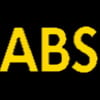
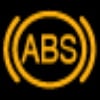 Anti-lock brake System Fault Indicator
Anti-lock brake System Fault Indicator

 Service Engine Soon Indicator
Service Engine Soon Indicator
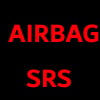 Air Bag Warning Light
Air Bag Warning Light
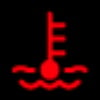 Engine Temperature Indicator
Engine Temperature Indicator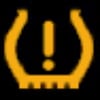 Tire Pressure Monitor Indicator – TPMS Light
Tire Pressure Monitor Indicator – TPMS Light Battery /
Battery /  Low Washer Fluid Indicator
Low Washer Fluid Indicator Low Fuel Indicator
Low Fuel Indicator Oil Warning Light
Oil Warning Light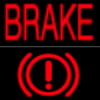 Brake Light
Brake Light High Beam Indicator
High Beam Indicator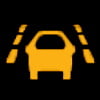 Lane Departure Warning Indicator
Lane Departure Warning Indicator Stability Control Indicator
Stability Control Indicator Turn Signal Indicator
Turn Signal Indicator Door Ajar
Door Ajar Park Lamps ON
Park Lamps ON  Seat Belt Reminder
Seat Belt Reminder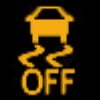 Stability Control OFF
Stability Control OFF  Security Indicator
Security Indicator Hybrid Ready Indicator
Hybrid Ready Indicator Fog Lamp Indicator
Fog Lamp Indicator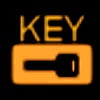 Keyless Access or Start Fault Indicator
Keyless Access or Start Fault Indicator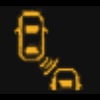 Blind Spot Warning Indicator
Blind Spot Warning Indicator All Wheel Drive Trouble Indicator
All Wheel Drive Trouble Indicator
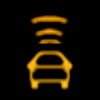 Automatic Emergency Braking Indicator
Automatic Emergency Braking Indicator Cruise Control Indicator
Cruise Control Indicator
 Drive Mode Indicators
Drive Mode Indicators EV ON Indicator
EV ON Indicator
 Park Brake Indicator
Park Brake Indicator
 Master Warning Light
Master Warning Light Hood Ajar Indicator
Hood Ajar Indicator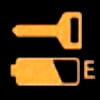 Low Key Battery Indicator
Low Key Battery Indicator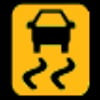 Slip Indicator
Slip Indicator Check the Automatic Transmission Indicator
Check the Automatic Transmission Indicator Automatic Transmission Park Indicator
Automatic Transmission Park Indicator  Continuously Variable Transmission Indicator
Continuously Variable Transmission Indicator Electronic Brake Force Distribution Fault Indicator
Electronic Brake Force Distribution Fault Indicator  Brake Pad Wear Warning Indicator
Brake Pad Wear Warning Indicator Steering Lock Fault Indicator
Steering Lock Fault Indicator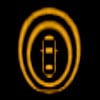 Lane Intervention Indicator
Lane Intervention Indicator Steering Assist Indicator
Steering Assist Indicator Backup Collision Intervention OFF Indicator
Backup Collision Intervention OFF Indicator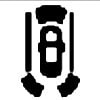 Driver Assist System Indicator
Driver Assist System Indicator Check Suspension Indicator
Check Suspension Indicator Tow Mode Indicator
Tow Mode Indicator 4 Wheel Drive Trouble Indicator
4 Wheel Drive Trouble Indicator  Snow Mode Indicator
Snow Mode Indicator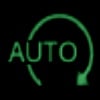 Idle Start Stop Indicator
Idle Start Stop Indicator  EV Mode Indicator
EV Mode Indicator Regenerative Brake System Fault Indicator
Regenerative Brake System Fault Indicator EV Fault Indicator
EV Fault Indicator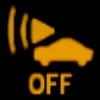 Pedestrian Sound Fault Indicator
Pedestrian Sound Fault Indicator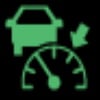
 Intelligent Cruise Control Indicator
Intelligent Cruise Control Indicator Adaptive Front Lighting OFF Indicator
Adaptive Front Lighting OFF Indicator Headlamp Indicator
Headlamp Indicator Automatic High Beam Indicators
Automatic High Beam Indicators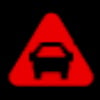 Distance Warning Indicator
Distance Warning Indicator 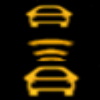 Vehicle Ahead Indicator
Vehicle Ahead Indicator 


